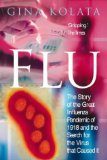
Flu primarily attacks the lungs
Tamiflu, the flu drug the world is stockpiling, may not be as effective a weapon as had been hoped in stemming a flu pandemic that could kill tens of millions, scientists said. But it is still the main known defence, at a time when the internet is flooded with false claims for dubious “immunity building” products. No vaccine against the dangerous strain H5N1 bird flu yet exists, because in the process of being transmitted to humans and then from human to human, it will mutate.
The cheapest defence, once the feared pandemic strikes, is a simple face mask. But some other drugs have been mentioned as potentially useful. An Indian company has announced it plans to break the monopoly on the drug currently held by multinational Roche. If anyone knows where to get cheap, reliable supplies, please let us know.
Concerns about the drug were raised as it was revealed that it had failed to work on a Vietnamese girl infected with the deadly form of bird flu H5N1. Researchers found that the virus had become resistant to Tamiflu. The possibility that resistance would develop to the drug has long been acknowledged, but it is a blow to the pandemic preparations that it has emerged so quickly. The significance of the discovery led to immediate publication of the researchers’ paper by the journal Nature.
Yoshihiro Kawaoka from Tokyo University and colleagues report that the girl recovered, but say that the case “raises the concern that oseltamivir (brand name Tamiflu) may not be sufficient to fight a potential H5N1 pandemic”. When they used the resistant virus to infect ferrets, however, they found that it was still sensitive to the flu drug zanamivir (inhaled under the brand name Relenza).
“It could be useful to stockpile zanamivir as well as oseltamivir in the event of an H5N1 influenza pandemic”, the authors say. The circumstances of the case also raise the possibility that the girl was infected by her brother. If the virus mutates to a form that easily jumps from one human to another, a pandemic is inevitable, but there need to be more such cases before we can assume that is happening, the researchers say.
Nobel prize-winner Sir John Sulston called for reform of the drug patent system yesterday to allow faster stockpiling and wider access to antiviral drugs. “A major problem in the decision-making processes of governments is that drugs are very highly priced. This is because of the way the intellectual property system works,” he said on BBC Radio 4. It rewarded companies for their investment in creating drugs by allowing them to set high prices without competition, but it did not help get universal access. “I think if we can reform intellectual property so as to separate the creative process of research and development from the production of drugs, making them cheaper, we will be a great deal better off,” he said.
He spoke as the drug company Cipla announced that it would be making its own copies of Tamiflu, to sell in the developing world. Generic manufacture of the drug is not permitted in the UK, Europe or the US. Intellectual property legislation gives Tamiflu’s manufacturer, Roche, a monopoly on sales and marketing .
One possible source of Tamiflu is https://www.pharmaenergy.com/ where a course costs $200, double the price of a year ago.
 21st Century Complete Medical Guide to Avian Influenza and Bird Flu, Pandemic Risks, Authoritative CDC, NIH, and FDA Documents, Clinical References, and … for Patients and Physicians (CD-ROM)” – buy it from Amazon US
21st Century Complete Medical Guide to Avian Influenza and Bird Flu, Pandemic Risks, Authoritative CDC, NIH, and FDA Documents, Clinical References, and … for Patients and Physicians (CD-ROM)” – buy it from Amazon US Flu: The Story of the Great Influenza Pandemic of 1918 and the Search for the Virus That Caused It” – buy it from Amazon UK
Flu: The Story of the Great Influenza Pandemic of 1918 and the Search for the Virus That Caused It” – buy it from Amazon UK